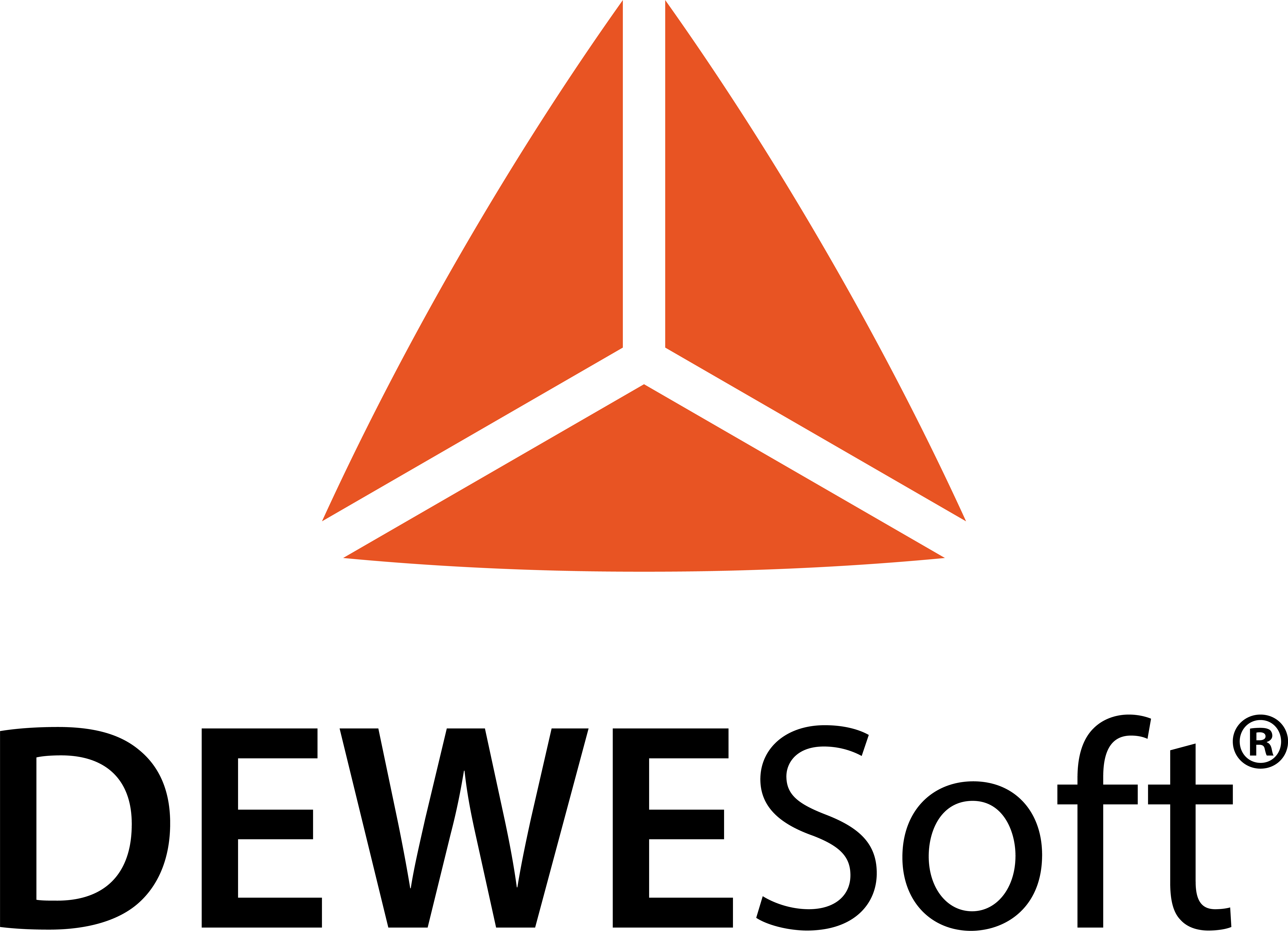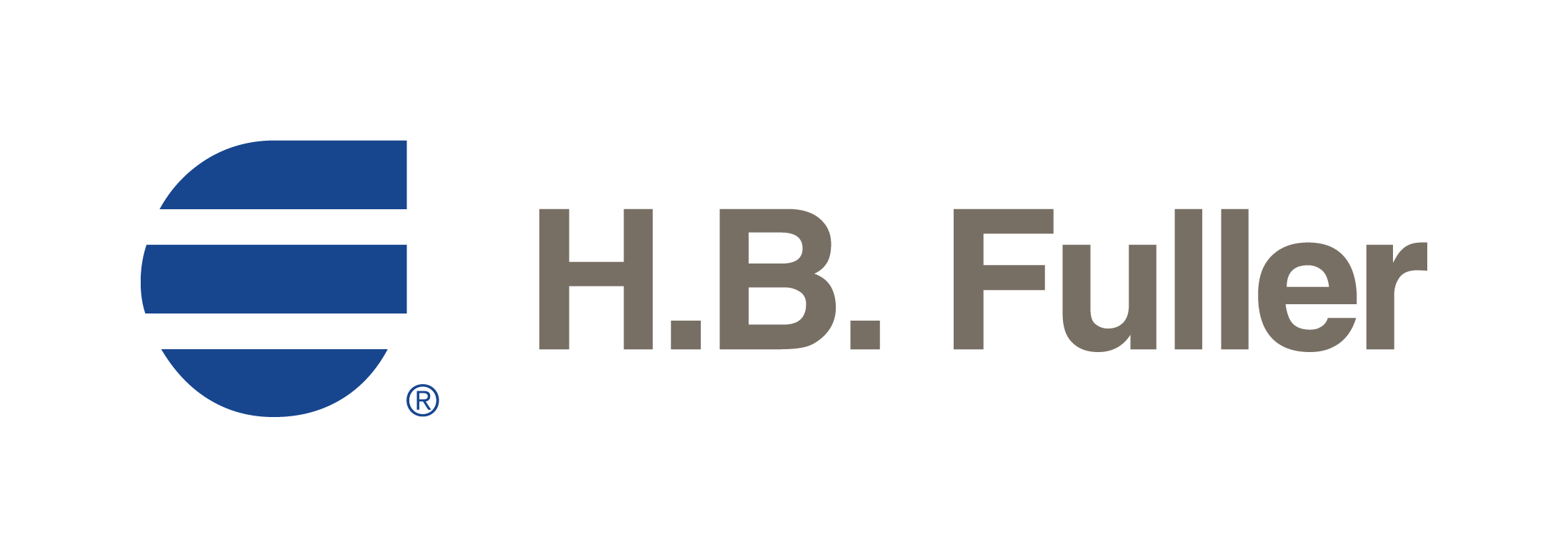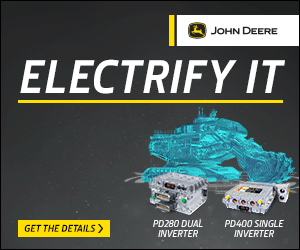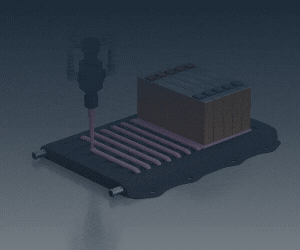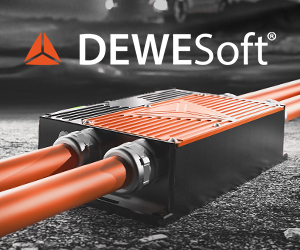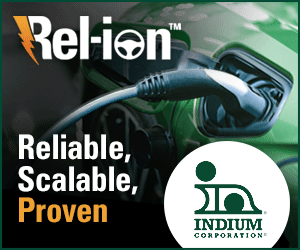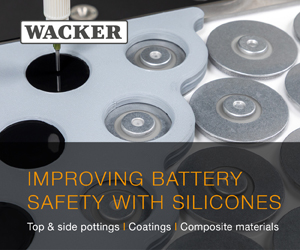Vernay’s passive vent reduces battery moisture ingress
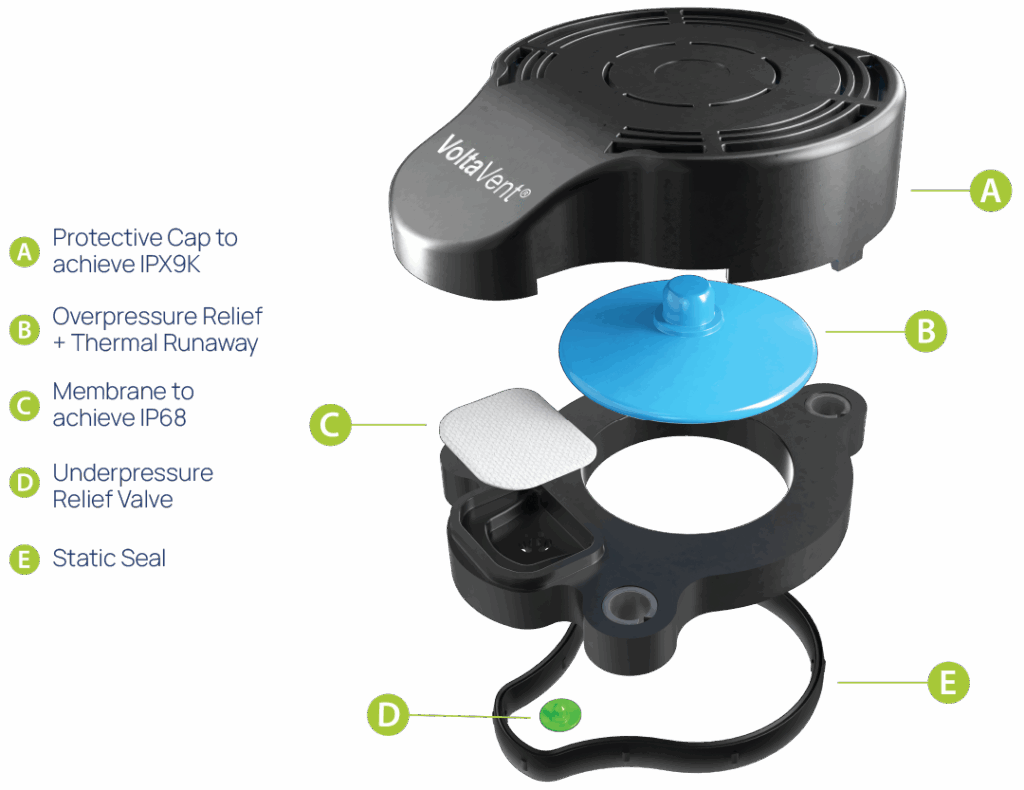
(Image courtesy of Vernay)
Vernay has developed a passive battery vent valve system that radically reduces uncontrolled moisture ingress during pressure equalization. The Volta Vent, now in series production, combines overpressure and vacuum relief with a sealed “protection zone” that only opens during necessary venting events, writes Peter Donaldson.
“Where conventional solutions constantly exchange air with the environment, our system maintains a closed state during normal operation,” explains Evert van den Hurk, global mobility business unit manager at Vernay. This approach reduces moisture accumulation compared to standard membrane vents, as demonstrated in thermal shock tests showing droplets instead of pooled water.
The dual-valve design uses silicone rubber valves actuated solely by pressure differentials. A large umbrella valve handles thermal runaway events with high-flow capacity, while a smaller valve manages controlled air intake during vacuum conditions. Both integrate with a flame-retardant PA housing to meet not only IP68 but also IPX9K ingress protection standards.
First developed for early Tesla models, the technology has evolved to address moisture-sensitive applications like large-format packs. Unlike active systems requiring power or conventional passive systems that use desiccants, the passive design ensures reliability while reducing auxiliary components, van den Hurk notes.
Vehicle manufacturers are adopting the solution as awareness grows of moisture-related degradation risks. Vernay reports the off-the-shelf product – unusual for their typically custom-focused business—is gaining traction despite increasing competition. The company continues to offer its original umbrella valve for applications where moisture control is less critical.
Click here to read the latest issue of E-Mobility Engineering.
ONLINE PARTNERS



